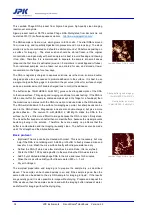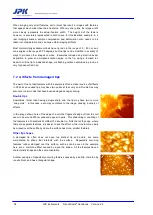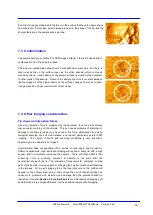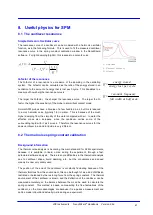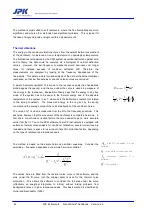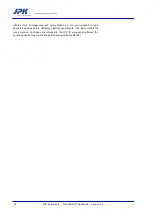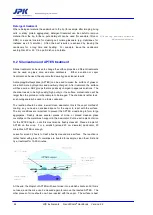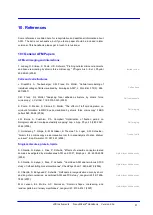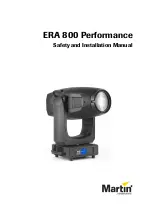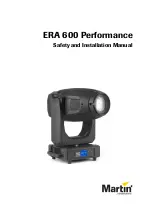
36
JPK Instruments NanoWizard
®
Handbook Version 2.2
This Lambda Phage DNA product from Sigma has given high-quality clean imaging
results over a long time:
Sigma product number D3779 Lambda Phage DNA, Methylated from Escherichia coli
host strain W3110 (buffered aqueous solution).
The DNA sample is from a virus, which grows in E.Coli cells. The viral DNA is around
16 microns long, and is partially digested into pieces around 3 microns long. The stock
solution is quite concentrated and should be diluted around x100 before depositing on
a surface for imaging. The stock solution should be stored frozen, at the original
concentration, and generally with such samples it is best to avoid freezing and thawing
it too often. Therefore it is recommended to separate the sample into small doses
(aliquots) the first time it is defrosted (around 1-5 microliters in small Eppendorf tubes).
Then individual samples can be taken out and diluted for use, and stored at lower
concentration in the fridge for a few days.
Lambda Phage DNA in liquid
The DNA is negatively charged in aqueous solutions, as is the mica, so some double-
charged positive ions are needed to promote adhesion to the surface. It is best to use
a single-charged buffering agent to maintain the pH value (critical for surface charge)
and use a smaller amount of double-charged ions to control the adhesion.
The buffer recipe 10mM HEPES, 2mM NiCl
2
gives quite strong adsorption of the DNA
to the mica surface. This gives good imaging conditions for quick testing. If the DNA is
left in nickel buffer (for example, diluted samples kept in the fridge for a few days) then
the nickel ions can interact with the DNA in solution to induce kinks in the DNA strands.
The DNA will still adsorb to the surface for imaging as normal, but sharp bends can be
seen in the DNA strands. Magnesium ions are also double-charged, but give a more
gentle adhesion. The mixture 10 mM HEPES, 2 mM MgCl
2
sticks the DNA to the
surface, but it is a little more difficult to image because the DNA is not so firmly stuck.
The nickel buffer keeps much better than most salt buffers, because the nickel prevents
bacteria growing in the solution. Therefore there are usually no problems that the
buffer is contaminated and the imaging is usually clean. The buffer can also be made
up at 10x strength and the diluted before use.
Strong buffer (good imaging):
10mM HEPES, 2mM NiCl
2
Gentle buffer (no kinks):
10 mM HEPES, 2 mM MgCl
2
Basic protocol:
•
(Optional) The mica can be pre-treated with nickel. This is not necessary, but may
help if the DNA is not sticking well. Add 50 µl of buffer to freshly cleaved mica and
leave for 5 min. Wash the mica surface briefly with ultrapure water and dry
•
Defrost the DNA (if stored as a few microlitres in a small tube, this is very fast).
•
Dilute the DNA 1:100 by adding buffer to the small tube the DNA was stored in.
•
Add 30 µl of diluted lambda phage DNA to the mica and leave for 5 minutes.
•
Rinse the mica surface briefly with ultrapure water (500 µl – 1 ml)
•
Dry with nitrogen.
Lambda Phage DNA in liquid
The simplest preparation and imaging is to prepare the sample dry, as described
above. The sample can be checked quickly in air, and if the sample is good, then the
same buffer can be added to the dry DNA sample for imaging in liquid. If the results
are generally good, it is also possible to image without drying. Prepare and deposit the
DNA as above, then the sample can be rinsed with the imaging buffer instead of water,
and left wet for imaging without the drying step.















